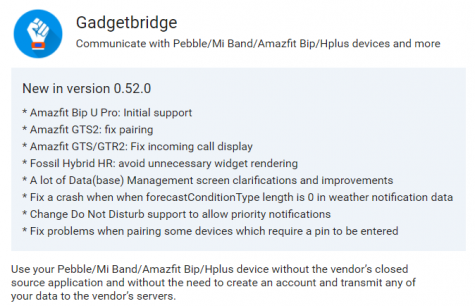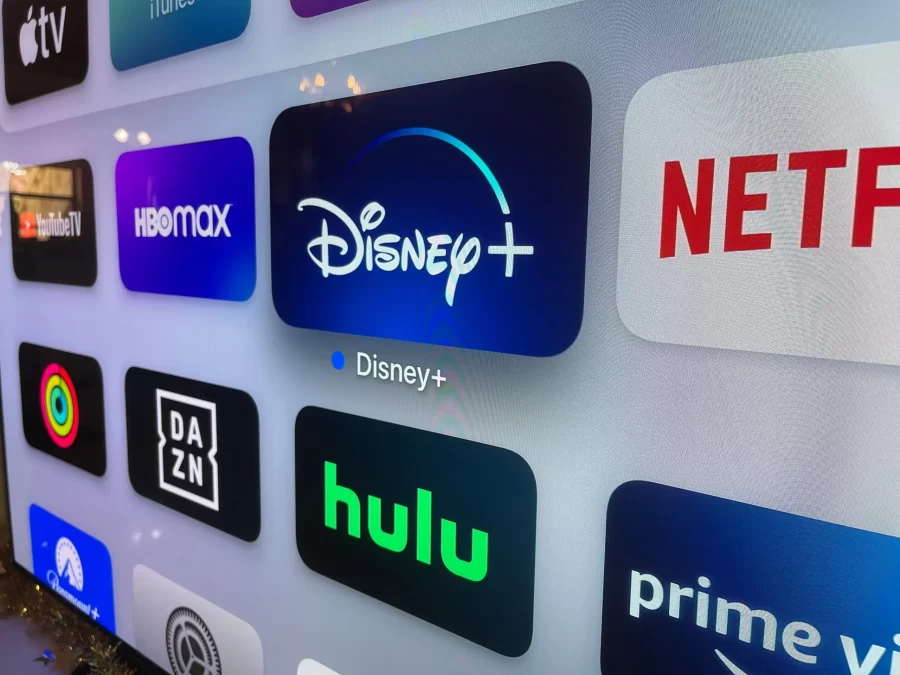The Problem with Planned Obsolescence.
While vintage cameras are coveted collectors items for purists, old cell phones are designed to be quickly swapped out for the newer, better, faster model.
February 4, 2021
Tech companies like to do this thing where they go on stage and talk about all the great things they are doing to help the environment, Apple in particular in easy to pick on because they tend to go on about their great recycling program, or their move away from including power adapters with iPhones as if they were some benevolent gift to society that will hugely cut down on waste, and not a carefully calculated way for them to extract more money from consumers, but really every hardware company is to blame – even if they don’t shout about their virtues as loudly as Apple does- tech companies have for years made carefully calculated moves towards decreasing consumer reparability, limiting third part refurbishment and resale, and sometimes even outright restrict the useful life of their devices as a way to force us to keep on buying more.
Even though I picked on Apple in the intro, I think one of the worst industry practices is not the iPhone but instead a near universal problem, particularly prevalent

among Android handsets: The Android software problem. Lots of Android phones get thrown out due to out of date software. Android has a famously terrible software upgrade experience. The fragmented nature of the Android markets leaves consumers at the mercy of device manufactures (and often cell carriers as well) in order to receive an update. This is problematic because most hardware manufacturers, such as Samsung, only commit to three years of updates on their flagship phones, with mid-range phones or carrier specific models often getting less, which means that phone hardware that could be perfectly capable of delivering a good user experience even on a modern OS often gets thrown out because it is missing the newest features and security that comes with a current version of Android. For example I replaced my (beloved) LG G5, not because of any hardware fault, it was a fast phone with a respectable camera and screen, but because I didn’t want to be stuck on Android 8.1 when Android 10 had already been out for some time. The reason why this problem is so frustrating is not just because Samsung and LG don’t want to spend the time and money to keep building new versions of Android for old hardware, as corporations it is well within their rights not to, but because they won’t even let consumers do it themselves.
Historically Android phones have allowed “bootloader unlocking” – which allows users to install a custom OS – allowing community members to build new versions of Android long after the device manufacturer has moved on. Leaving consumers to support their own phones isn’t a perfect solution, because it requires the user to have, or acquire technical knowledge, but it does help keep some devices out of the landfill, and allow old devices to last for many many years. For example the Samsung Galaxy S3, a phone from 2012 was updated all the way through 2017 with official Lineage OS community Android builds, and to this day still gets unofficial builds from XDA community members, the same thing applies the the Google Nexus 4, also from 2012, which received official Lineage builds through 2018. However bootloader unlocking has become a specialty feature, with modern US model Samsung phones, and

carrier model Google Pixel phones both dropping support, meaning that these third party updates are no longer an option. Leading people to have to choose between living without the newest features and security updates, or having to replace the phone with new hardware.
This problem applies to devices outside of Android smartphones as well. For example the 3D Systems Cube Pro 3D printer that the school attempted to deploy in the library was a solidly built piece of hardware, with many nice features such as built in WiFi, a filament monitor, and a solidly reinforced steel and aluminum frame causing the printer to weigh a full 90 pounds, yet despite all this the printer never worked well because the software was terrible and had been abandoned by 3D Systems, with the design of the printer making it near impossible to use 3rd party filament (even though 3D systems no longer manufactured filament cartridges) or community created software the school was left with no option but to replace the printer. One of the few examples of a company doing the right thing when it comes to the abandonment of a product is the Pebble Watch, which lost support shortly after its acquisition by Fitbit, however instead of

simply leaving the product to rot they opened it up to the community, releasing tons
of technical documentation resulting in lots of high quality third party software to keep the devices on people’s wrists.
Yet Apple is not going to get off scot free either. While they do a much better job providing software support to older iPhones they still go out of their way to assure that otherwise good iPhones go to waste, in what I call the iPhone hardware problem. Echoing the way that most Android manufactures have gone out of their way to remove bootloader unlocking and assure that the community can not create their own software Apple has gone out of their way to limit the ability of the community to service iPhone hardware. iPhone hardware has historically not been the most reliable, amy phone prior to the iPhone 7 (which switched to a non-mechanic button design) had a decent chance of home button failure, the 6 and 6+ suffered from many hardware failures, including touch disease, and the iPhone suffers from the same battery wear and risk of physical damage to the display as any other phone, yet even though many of these hardware issues are simple caused by wearable items that are not unique to Apple, Apple is in the unique position of making it near impossible for anyone to service these wearable items. Apple has designed systems to ensure that 3rd party repair is as difficult as possible, often having the components and iPhone communicate to ensure that the component had not been replaced. While Apple claims this is meant

to stop counterfeit parts, iFixit discovered that simply swapping genuine Apple parts from one new iPhone to another could flag Apple’s “counterfeit part” detection. Apple also is very litagus when it comes to stopped iPhone repair, they have had customs seize genuine refurbished iPhone parts, and most recently sued a device recycler for refurbishing and reselling old iPhones. A lawsuit that prompted some to draw parallels to the farm owners pouring kerosene on the oranges in Steinbeck’s Grapes of Wrath.
However there is still… The security problem! Many companies defend these seemingly anti-consumer practices by saying that they are actually in the customer’s interest because they improve security, and they are not completely wrong… Strong device control measures such as Find My iPhone or Android Device Manager have removed much of the incentive for phone theft by allowing users to remotely disable missing devices, and it is commonly argued that these restrictions on repair and software flexibility help strengthen these protection features. For example if an iPhone was stolen, and Find My iPhone was activated the iPhone’s logic board would lock down but people could still harvest and resell parts, now that parts are tied to the logic board that incentive is removed, likewise if an Android phone was stolen with a locked bootloader the phone could go into a similar lockdown to that of the iPhone, however if the phone had an unlocked bootloader code could be flashed to bypass the lockdown (now that I have told you this please don’t steal my phone) but I believe that both of these problems are minor because they require the thieves to possess the technical knowledge to know you can harvest parts, or know that if a bootloader is unlocked you could flash code, and I am willing to bet the vast majority of phone thieves lack that knowledge, and besides the vast majority of Android users, even on phones that allow it don’t have an unlocked bootloader, making it a moot point. Besides at some point we have to decide on the best way to balance security and freedom, we have done this with other things. The bill of rights has strong protections for suspected and accused criminals that may cause some guilty men to walk free, but we as a society have decided that it was worth the risk to ensure people’s liberty. Comparing consumer electronics to the bills of rights

might seem silly, but the core question is similar, what is the right balance of liberty (the ability of the consumer to repair, upgrade and otherwise modify their device) and security? There isn’t necessarily one right answer to that question, but some have proposed regulations that say that when a company decides to abandon a product they are legally required to release internal documentation and tools to allow the community to continue to support it, as well as a strong right to repair legislations which would require companies be willing to sell parts to consumers and provide documentation on how to install those parts.
So as the debate about how best to address the issue of e waste and planned obsolescence rages on what can you? The best thing you can do is change your buying habits, look for, and buy, devices that will last a long time. While this can be hard to know in advance there are still a few useful indicators that can give you a rough idea of how long a device will be supported. The first indicator is parts availability, with a phone the most important parts to search for are the screen and battery, research who has parts for your device, how much they cost, if they are new OEM parts, refurbished/salvage, or aftermarket. Knowing that high quality and affordable parts are readily available means that you will have a much easier time finding someone to repair your device should a hardware issue arise. On the software front look for devices from a manufacturer that has a proven history of providing software updates for their devices, or failing that choose a device that has a vibrant developer community, even if you don’t plan to use third party software right away a device with third party development gives you the flexibility to switch to community software if the manufacturer’s software where to be abandoned prematurely. For example I recently bought a low end smart watch, out of all the chinese smartwatch brands in the sub $50 market I choose a Haylou model not because it looked the best or had the most features but because I saw that a third party app was available. I didn’t originally plan to use that third party app, but I quickly discovered that the official software had several major glitches, particularly with the weather, which a switch to the third party software resolved. The ability to repair and modify devices is key to extending useful life of smart devices and also a great way to pick up and apply tech skills that will continue to allow you to get the most out of your devices.








